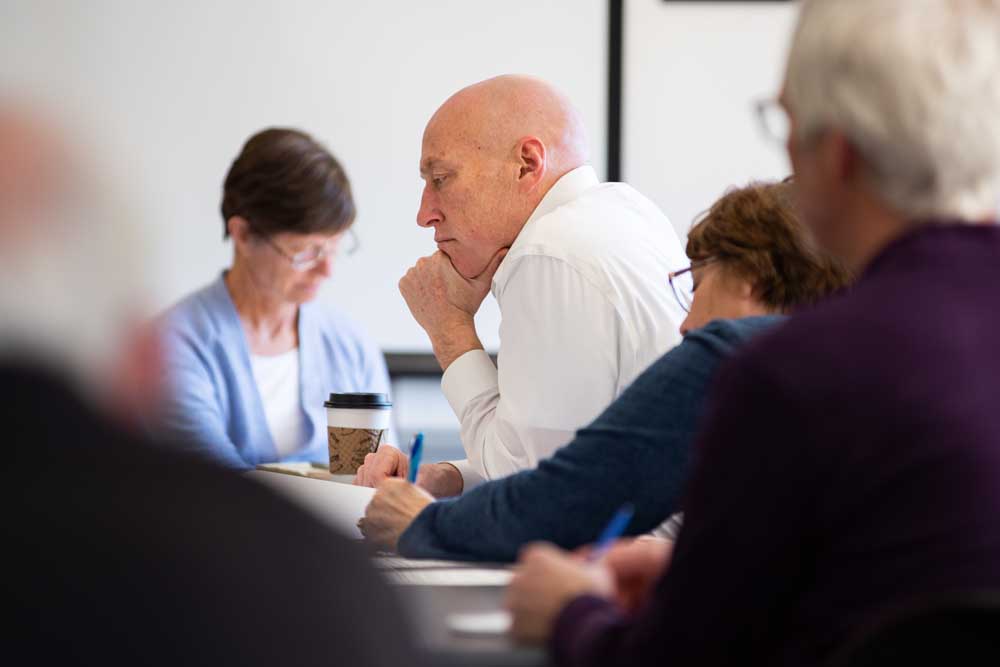SCREEN SCENE: New ‘Chocolate Factory’ is pretty, but uninspired
Published 5:00 pm Wednesday, July 20, 2005
Never before have I approached a box office window with more trepidation.
Trending
I was out-and-out frightened by “Willy Wonka and the Chocolate Factory” as a child. Traumatized, even. Children meeting their ends in horrific and grotesque ways? Midgets in clown-like getups? (Clowns for me were bad enough on their own.) A hellacious acid trip of a boat ride piloted by Gene Wilder at his most unhinged? I later became a big fan of Wilder’s, but as Willy Wonka, he convinced me there was a crazed maniac smoldering just beneath the velvet top hat.
And now comes a remake by Tim Burton, the master of the macabre, who paints even his lightest comedies (“Pee Wee’s Big Adventure,” “Mars Attacks”) with shades of the unsettling and bizarre. Add the unnerving quirkiness of Johnny Depp as Wonka, and I was predicting nightmares all over again.
But exiting the theater two hours later, I realized the biggest fright of the evening was shelling out nearly $50 for tickets and snacks for my family to see this movie.
Trending
Roald Dahl’s 1964 book is an obvious morality play. Rotten children (and their rotten parents) take advantage of dotty candymaker Willy Wonka’s generosity and get what they deserve; poor but upstanding Charlie wins big. Dahl’s writing is so vivid and picturesque that the screenplay by John August differs very little from the 1971 film version, which lists novelist Dahl as the only writing credit. In fact, the story unfolds nearly identically, scene for scene.
Burton’s influence is dramatically obvious in parts of the production design – look for his signature hand-twisted curlicues in the colorful edible landscape that greets Charlie and the other lucky children upon entering the chocolate factory. Charlie’s tumbledown house on the outskirts of town is also a fabulous set, built on a steep slant like a carnival attraction.
But with unlimited possibilities for whimsy and fantasy, especially from a mind as imaginative as Tim Burton’s, I was expecting to be wowed. And in too many scenes, I wasn’t. Burton almost seems to be ticking off plot points as he goes along, without investing much brainpower in their design or function. The scene involving Mike Teavee, the last of the rotten bunch to get his comeuppance, is the weakest in Dahl’s story and felt extraordinarily humdrum on the screen.
Johnny Depp plays a much more vulnerable and insecure Willy Wonka than audiences might expect. Screenwriter August invented a backstory involving an overbearing father (Christopher Lee as an intimidating dentist) to give Wonka’s character more depth, but the story’s already so over-the-top that viewers would have accepted Wonka as an eccentric, no explanation needed. Flashing too-perfect teeth and sporting a Prince Valiant haircut, Depp’s take on Wonka is that of a kid in a candy store who’s never grown up or experienced the real world.
The theme of family runs strong throughout the film, but little Charlie’s already got a secure, loving family – it’s Willy Wonka who becomes the main character and has to deal with his father-son issues.
Visually, the film is lush. And what’s amazing is that the filmmakers resorted to computer-generated imagery as seldom as possible, opting instead for animatronics, special effects props, makeup and costumes and live animals – including 50 trained squirrels.
But their biggest triumph, and hands-down the most brilliant aspect of “Charlie and the Chocolate Factory,” is their update on the Oompa Loompas. Replacing 10 orange-faced, green-haired midgets is one actor by the name of Deep Roy, diminutive to begin with but digitally sized down to 21/2 feet tall and filmed multiple times for each scene, creating the illusion of dozens of tiny identical men. Like a Greek chorus, the Oompa Loompas have a musical commentary every time something dreadful happens to a rotten kid, and composer and frequent Burton collaborator Danny Elfman surpasses himself with showstopping song and dance numbers for them to perform. Mute except for the musical numbers (Elfman himself did all the vocals), Roy plays the multitude of Oompa Loompas with masterful timing and wit.
To revel in the full panoramic effect of the singing, dancing Oompa Loompas, head to Portland and catch “Charlie and the Chocolate Factory: The IMAX Experience” now playing at OMSI.









